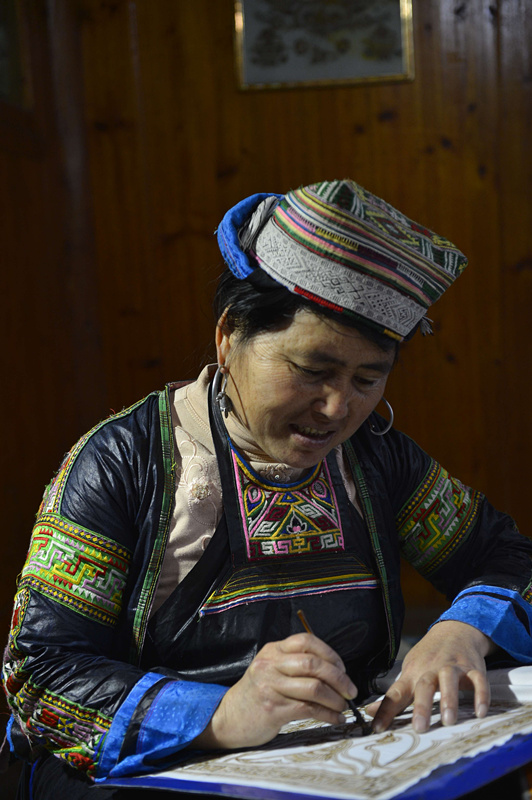 |
|
Jiang Laoben draws traditional patterns on the cloth with a wax knife.[Photo by Chen Peiliang/Asianewsphoto]
|
It was a normal day at the end of November. Jiang Laoben expertly cut a piece of paper and a classic design for a renowned traditional dress of the Miao people was instantly seen. The dress, with its complicated pattern and rich colors, is called “hundred-bird”.
A “hundred-bird dress” originated with the Miao ethnic group in Baibei Village of Xinghua Sui Ethnic Township, in Qiandongnan Miao and Dong Autonomous Prefecture, Guizhou province. The dress is decorated with celebrated Miao embroidery, a craft that falls on the state-level intangible cultural heritage list.
Jiang Laoben, who is in her late forties, is an inheritor of dress craftsmanship in the village and she is well-known across the province due to her superb technique. The complicated patterns and diverse designs turn into beautiful outfits of excellent quality in her skillful hands.
